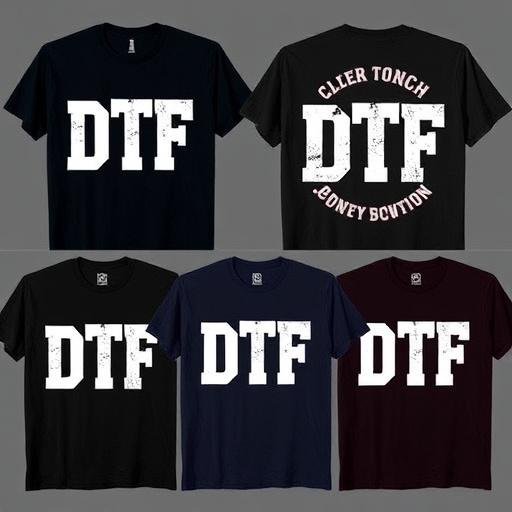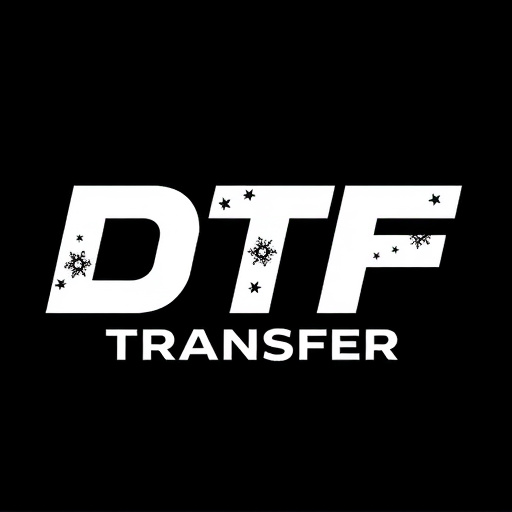Direct-to-film (DTF) technology offers a game-changing approach to printing with benefits such as swift turnaround times, high color accuracy, and versatility. Popular in art, photography, and design, DTF is embraced by professionals for its exceptional results. For businesses, DTF transfers provide cost-effective marketing through discounted pricing, facilitating rapid production and distribution of custom prints. Optimal DTF process involves using top-tier materials, calibrated printers, and automated systems. Case studies demonstrate successful DTF implementations in fashion and digital signage. Future trends include improved quality, enhanced durability, eco-friendly materials, and expanded applications across diverse industries.
In today’s visual age, high-quality direct-to-film (DTF) transfers are transforming how businesses enhance their marketing and branding strategies. This article delves into the world of DTF technology, exploring its benefits for bulk printing, cost savings, and process optimization. We’ll uncover the power of DTF in various applications through case studies and discuss emerging trends shaping the future of this innovative print method. Discover why DTF prints are not just a trend but an essential tool for modern businesses.
- Understanding Direct-To-Film (DTF) Transfers: A Comprehensive Overview
- Benefits of Bulk DTF Transfers for Businesses
- The Cost Savings: Unlocking Discounted Business Pricing
- How to Optimize Your DTF Printing Process
- Case Studies: Successful DTF Transfer Implementations
- Future Trends in DTF Technology and Its Applications
Understanding Direct-To-Film (DTF) Transfers: A Comprehensive Overview
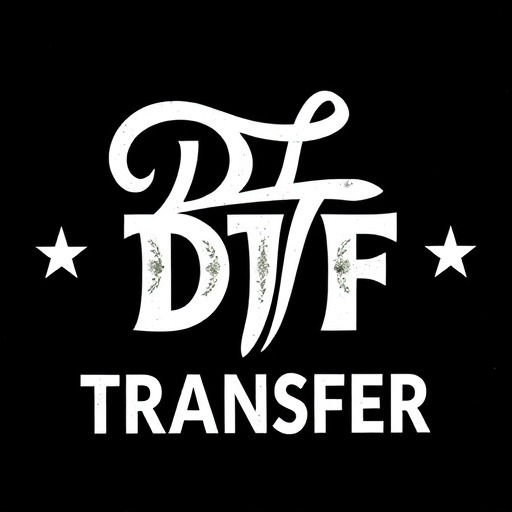
Direct-to-film (DTF) transfers are a cutting-edge printing technology that offers an efficient and cost-effective alternative to traditional film printing methods. This innovative process involves transferring digital images directly onto film stock, enabling high-quality prints with exceptional color accuracy and detail. DTF is particularly favored in industries where fine art, photography, and graphic design converge, as it allows for the reproduction of intricate visuals without compromise.
The DTF transfer process begins with a digitally prepared image, which is then precisely burned onto film using specialized equipment. This direct imprinting ensures that every nuance of the original design is captured, resulting in stunning prints. DTF Printing offers various benefits, including fast turnaround times, versatile material options, and the ability to produce large formats without sacrificing quality. Its popularity has surged among professionals who demand top-tier prints for exhibitions, collections, or even as limited-edition art pieces, making it a preferred choice in today’s market for both commercial and artistic applications.
Benefits of Bulk DTF Transfers for Businesses
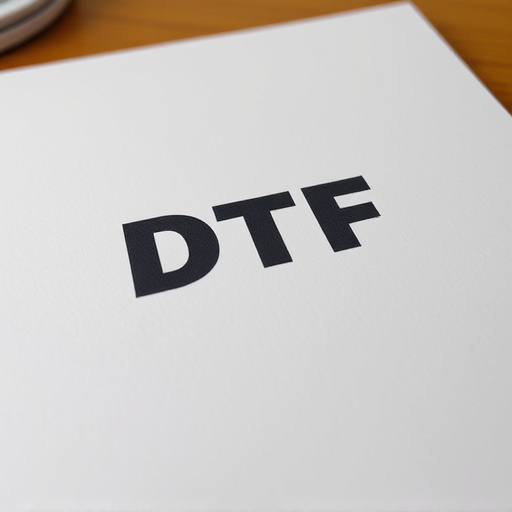
Bulk direct-to-film (DTF) transfers offer a range of benefits for businesses looking to enhance their marketing strategies and brand visibility. One of the primary advantages is cost-effectiveness; by purchasing DTF transfers in bulk, companies can secure significant discounts on printing services, making it an affordable option for producing high-quality promotional materials. This pricing structure is particularly advantageous for small businesses with limited budgets or startups aiming to establish themselves.
Additionally, DTF Printing allows for fast and efficient production of custom prints, ensuring that businesses can promptly respond to market demands and trends. The direct-to-film process eliminates the need for intermediate steps, streamlining the entire workflow. This efficiency translates to quicker turnaround times, enabling companies to stay agile and adapt their marketing campaigns swiftly. Furthermore, DTF Transfers provide excellent print quality, delivering vibrant colors and sharp details, which is essential for capturing attention and creating a lasting impression on potential customers.
The Cost Savings: Unlocking Discounted Business Pricing
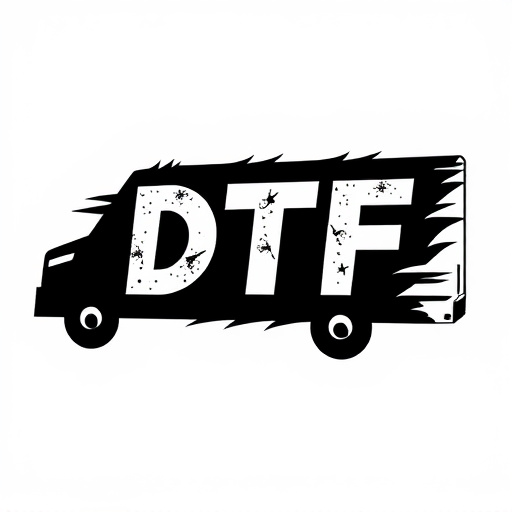
Direct-to-film (DTF) transfers offer a cost-effective solution for businesses looking to enhance their marketing strategies. By negotiating discounted business pricing, companies can unlock significant savings on DTF printing, making it an attractive option for bulk orders. This pricing model is often more affordable than traditional methods, allowing businesses to print high-quality custom designs and graphics directly onto various materials at a lower cost per unit.
The benefits are clear: with DTF transfers, businesses can achieve professional results without breaking the bank. Discounted business pricing structures vary, but they typically offer volume discounts, meaning the more you order, the lower the price per print. This is ideal for companies aiming to create and distribute a large number of custom products, such as promotional items, branded merchandise, or event signage. By taking advantage of these savings, businesses can stretch their marketing budgets further and invest in high-quality, impactful visuals.
How to Optimize Your DTF Printing Process
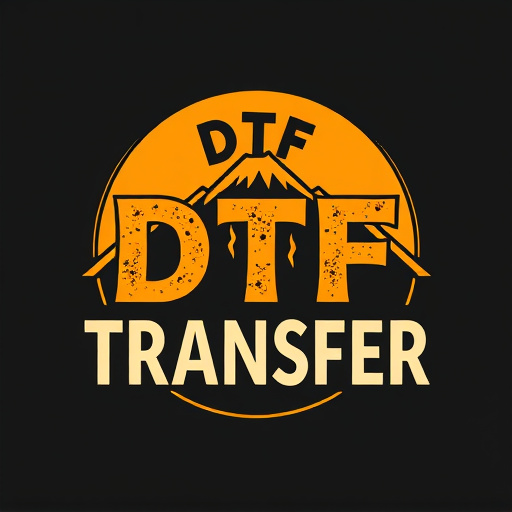
Optimizing your Direct-to-Film (DTF) printing process is key to achieving high-quality prints and maximizing efficiency. Start by investing in top-tier DTF transfer materials; this foundational step ensures your designs are accurately transferred to various surfaces, from t-shirts to mugs. Choose a reliable printer compatible with DTF technology, offering precise color reproduction and fine detail resolution. Calibrate your printer regularly for consistent output.
Additionally, pre-treatment is essential. Prepare your designs digitally, ensuring they meet the appropriate resolution and color profile requirements. Clean your printing surfaces thoroughly before each run to prevent residue buildup. Consider automated cutting systems to streamline the post-printing process, especially when dealing with multiple orders or complex designs. Regularly maintain and update your DTF equipment to stay ahead of the curve in terms of technology and print quality.
Case Studies: Successful DTF Transfer Implementations
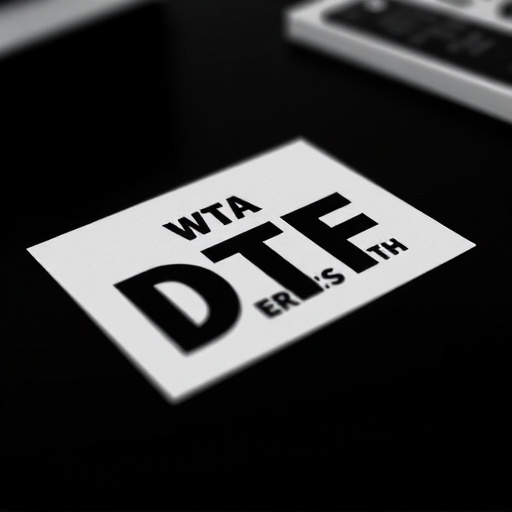
In recent years, bulk direct-to-film (DTF) transfers have transformed various industries by offering high-quality prints at affordable business pricing. Case studies from leading brands and enterprises highlight the successful implementation of DTF technology. For instance, a major fashion retail chain adopted DTF printing for creating custom, on-demand clothing labels, significantly reducing production time and costs without compromising quality. This shift enabled them to offer unique, personalized products while maintaining competitive pricing.
Another compelling example is a digital signage company that utilized DTF transfers for producing large-format prints used in outdoor advertising. By leveraging bulk purchasing and discounted business pricing, they achieved substantial cost savings while ensuring vibrant, durable displays that captivated audiences. These success stories underscore the versatility and economic benefits of DTF Transfer technology, making it a preferred choice for businesses seeking innovative, cost-effective printing solutions.
Future Trends in DTF Technology and Its Applications
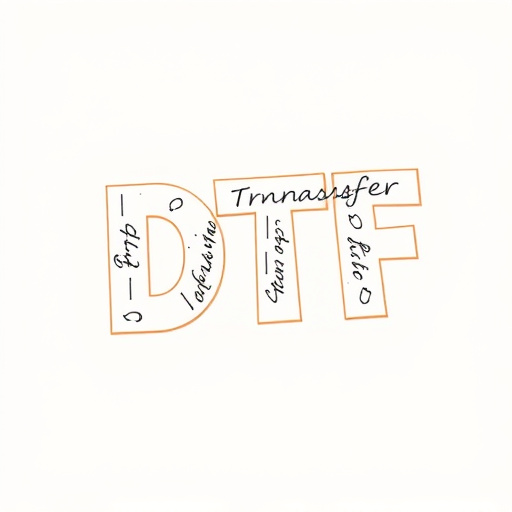
The future of direct-to-film (DTF) technology looks bright, with continuous innovations pushing the boundaries of what’s possible in printing and transfer applications. One prominent trend is the integration of advanced materials and inks, enabling higher quality DTF prints with enhanced durability and vibrant colors. This evolution promises to revolutionize various industries, from apparel to signage. As technology advances, we can expect more efficient and precise DTF machines capable of handling complex designs and larger formats, opening up new possibilities for custom printing and on-demand production.
Additionally, the rise of eco-friendly materials and processes is a significant focus area. Developers are actively working on creating ink and film options that reduce environmental impact without compromising quality or performance. This shift towards sustainability aligns with growing consumer demand for eco-conscious products. With these future trends, DTF transfers are poised to become more accessible, versatile, and sustainable, expanding their applications across diverse sectors and markets.





